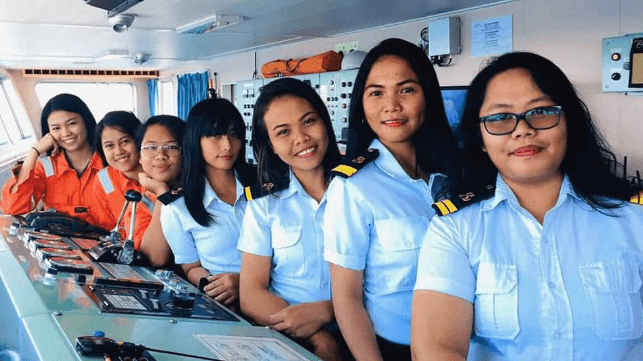World
IMO Urges More Efforts as World Marks Women in Maritime Day

Organizations around the globe marked the annual Women in Maritime Day, on May 18, highlighting the advancements women are making in the field while calling for continued actions for training and to support equality. The International Maritime Organization marked the day with its 36th annual program while also urging the industry to invest in the future by ensuring gender equality.
To highlight the continuing inequalities, the IMO cited data saying that currently only 29 percent of the overall maritime workforce and 20 percent of the workforce of national maritime authorities are women. They reported that despite all the efforts globally, women make up less than two percent of seafarers worldwide.
“We must – and will- do more,” said Arsenio Dominguez, the Secretary-General speaking at the IMO event to mark the day. “By investing in women’s education and professional development, we empower women, drive innovation, and foster sustainability within the maritime industry, to benefit of all.”
The numbers show slow progress and growth from a minuscule base. For example, the industry trade group BIMCO and the ICS did a survey in 2021 that reported women only represented 1.2 percent of the global seafarer workforce. While saying it was a 45.8 percent increase versus 2015, UN officials highlighted that it was possibly one of the lowest levels in any industry.
“Today is an opportunity to honor the remarkable achievements of women in the maritime sector while advocating for gender equality and inclusivity in this vital industry,” said the Australian Maritime Safety Authority (AMSA) Executive Director Policy and Regulation Leanne Loan. “Elevating female role models, embracing diverse perspectives, and fostering collaboration, is vital to a safer, more inclusive maritime sector.”
The IMO’s Women in Maritime program, initiated in 1988, takes a three-pronged approach of “training-visibility-recognition” for women. Under the theme of “Safe Horizons: Women Shaping the Future of Maritime Safety,” live broadcast one hour-45-minute symposium featuring a line-up of seafarers, maritime professionals, and maritime leaders.
Education and training was one of the persistent themes from many organizations. The UN Office of Drugs and Crime (UNODC) for example highlighted its efforts at advancing women into one of the most difficult sectors of the maritime world. Through its Global Maritime Crime Program (GMCP), and in cooperation with the Sri Lanka Navy, in August 2023 they conducted the first Inshore Patrol Craft (IPC) navigation training for female officers in Southeast Asia. The one-month training, incorporating both theoretical knowledge and practical exercise of running an IPC vessel at sea, helped strengthen the participants’ boat navigation skills, thus preparing them for a commanding duty in the future.
“Change is both necessary and coming…,” said Dominguez. “With increase in trade and the transition towards a greener and more sustainable sector, the opportunities to enhance diversity and inclusion are in front of us.”
The IMO points to emerging industry issues such as the rise of digitalization and automation as well as green technology in the sector. They highlight that these issues will require new skills and potentially signal new career opportunities for women.
Domingues concluded by calling on all the participants in the program, and around the globe, to look at how they can drive understanding, awareness, and change within their organizations and help achieve the UN’s Sustainable Development Goals and in particular Goal 5 to achieve gender equality and empower all women and girls.









